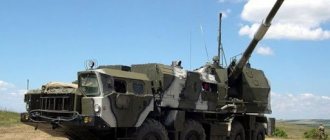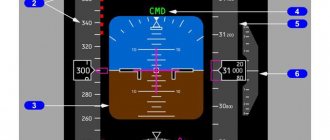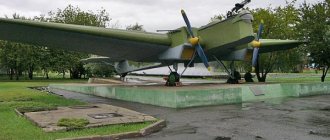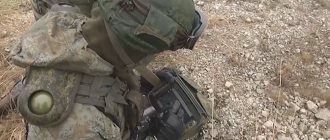Application
The Russian Aerospace Forces deployed the Krasukha-4 system at the Khmeimim airfield in October 2015 during a military operation in Syria[7]. According to Nezavisimaya Gazeta, it was with the help of Krasukha electronic warfare systems that on April 17, 2022, some American Tomahawk cruise missiles launched at government army positions were shot down in Syria[8].
According to the Russian News Agency, in October 2022, the latest modification of the Krasukha-4 electronic warfare system, deployed to the Russian military base in Gyumri, shot down nine Turkish Bayraktar drones on the territory of Armenia adjacent to the NKAO during the 2022 war[9 ].
EW DEVELOPMENT TRENDS
Based on the experience of military operations at the beginning of the 21st century. we can highlight the main trends in the field of electronic warfare for the near future:
- the use of electronic warfare forces in conjunction with combat command and control systems in information operations;
- transition from solving individual tasks to integrated management of electronic warfare in the interests of the entire group of troops;
- adoption of new universal electronic warfare systems with a significantly expanded frequency range and functionality;
- an increase in the number of targets simultaneously controlled, engaged, and suppressed by one electronic warfare system;
- expansion of the list of objects affected by electronic warfare in connection with the creation of directed energy weapons;
- creation of electronic warfare systems with an open architecture, the functionality of which can be changed by adding additional modules.
How effective is the Krasukha-4 complex?
In the summer of 2015, large-scale exercises were held in which the Russian Aerospace Forces and electronic warfare units took part. Among other things, techniques for jamming aircraft radars were practiced. The conditional enemy was the newest Su-34 fighter-bomber, which domestic experts classify as the 4++ generation. The plane was supposed to launch a missile and bomb attack on the command and control system of the troops, and the Krasukha-4 electronic warfare system was supposed to counter it.
“Krasukha-4”: inside the combat module
During a training collision, the electronic warfare station was able to completely disable the radar of the Sh-141 aircraft. It should be noted that this is a perfect phased array radar, and in order to suppress it it is necessary to create a fairly powerful and “smart” interference with a frequency of 8-12 GHz.
General description of the Krasukha-4 complex
The Krasukha-4 electronic warfare system is the latest domestic development, which has just begun to enter service with the troops. Therefore, most of its characteristics, unfortunately, are classified. In open sources you can only find scraps of information, the reliability of which can only be guessed at. However, some data is still publicly available.
Ceremonial handover of new army systems
The principle of operation of the Krasukha-4 electronic warfare complex generally differs little from other similar systems. First, the signal from the enemy radar is captured by the appropriate equipment, then it is analyzed, and then a strict “response” follows, that is, interference is placed at the desired frequency.
One of the predecessors of the “Krasukhi” complex, the SPN-30 noise jamming station, created back in the Soviet period, is capable of “jamming” the side-view and weapon control radars of aircraft, radars that provide flights at low altitudes, as well as those that are part of reconnaissance and strike complexes. It is likely that the more advanced Krasukha-4 can do no less. There are different data on the range of its operation - from 150 to 300 kilometers.
The Krasukha-4 complex includes two KamAZ vehicles with special equipment and antennas of various designs. Each of them is equipped with a YaMZ-8492.10-033 turbodiesel with a power of 500 hp. With. One of the machines contains control equipment, and the second carries large round antennas and an extendable tripod antenna - its functions are to receive and transmit signals. The vehicles have excellent maneuverability.
The antenna can rotate 360 degrees in the horizontal plane and 90 degrees in the vertical. That is, the complex does not have so-called dead zones.
The crew of Krasukha-4 consists of four military personnel. It should be noted that transferring the complex to a combat position takes only 15-20 minutes. The car cabins are protected from electromagnetic radiation and are equipped with air conditioning and a heater.
As mentioned above, Krasukha-4 is built on a digital element base, and the components of its equipment are very labor-intensive to produce: the production of one board can take several days. But the resulting characteristics are probably worth the expense. It is also known that some types of antennas of the complex are manufactured using powerful hydraulic equipment under high pressure.
It became known from several sources at once that KRET is developing a new electronic warfare system designed to perform the same tasks as Krasukha-4. At the same time, it is stated that its characteristics will be even “cooler.” True, it is not entirely clear whether we are talking about a new machine or simply a more advanced modification of existing systems.
Why do we need the Krasukha-4 electronic warfare complex?
"Krasukha-4" is one of the most high-tech developments of the domestic military-industrial complex. The main task of this complex is to counter enemy strike and reconnaissance aircraft by influencing and disabling the radar stations of aircraft. That is, he must, in the literal sense of the word, blind enemy planes.
Scheme of operation of the Krasukha complex
This complex is designed to cover ground troops, as well as critical objects, from radar detection.
It is designed to perform the following tasks:
- protection of air defense systems;
- command posts;
- launch complexes for strategic missiles;
- airfields;
- industrial and administrative facilities.
“Krasukha-4” analyzes the type of radar signal and then affects it with interference radiation. The complex can suppress ground-based radars, aviation systems such as AWACS, and even radar radars of reconnaissance satellites. It is also effective against cruise missiles and unmanned aerial vehicles. Moreover, target detection occurs in passive mode, that is, at this stage it is simply impossible to detect the complex.
Domestic experts believe that the Krasukhas will not be transferred to army brigades and combined arms armies. Rather, they will be used to strengthen the defense of particularly important objects and directions, where an attack by a powerful and well-equipped enemy is most expected.
The station operates in a wide frequency range and is capable of effectively jamming any type of radar used on modern aircraft, as well as jamming control channels of unmanned aerial vehicles. At the same time, the developers assure that the speed and height of the object are not particularly important for Krasukha-4.
History of creation
The development of the Krasukha complexes began in the mid-1990s. Simultaneously with the 1RL257 “Krasukha-4” complex, the 1L269 “Krasukha-2” system was developed. The complexes differ from each other in the composition of the equipment used (“Krasukha-2” is made on analog equipment, “Krasukha-4” is made on digital equipment [3]), characteristics and the chassis used. The Krasukha-2 complex is mounted on a four-axle chassis BAZ-6910-022, and the Krasukha-4 complex is mounted on a four-axle chassis from the KamAZ plant. Information that allows you to compile a detailed list of differences between the complexes is classified.
State testing of the complexes was completed in 2009.[4]
Notes
- ↑ 1 2
KRET completed the State order ahead of schedule for the supply of electronic warfare equipment "Krasukha-2" to the army
(unspecified)
. Access date: 16/6/2015. - ↑ 1 2
Electronic warfare complex “Krasukha-4”
(unspecified)
(inaccessible link). Access date: 16/6/2015. Archived from the original on April 4, 2015. - ↑ 1 2
How a top-secret machine jams the enemy
(unspecified)
. Access date: 16/6/2015. - ↑ 1 2
1L269 Krasukha-2
(unspecified)
. Access date: 16/6/2015. - Source: troops will receive four Moskva-1 electronic warfare systems by the end of the year (unspecified)
. Access date: 16/6/2015. - ↑ 1 2
1RL257 Krasukha-4
(unspecified)
. Access date: 16/6/2015. - The latest electronic warfare systems “Krasukha-4” (unspecified)
. Lenta.ru. Date accessed: October 5, 2015. - The Tomahawks were prevented from reaching their targets by the Krasukhas // Nezavisimaya Gazeta, April 18, 2018
- "Krasukha-4" in Armenia. Panacea for bayraktars in positions // Russian News Agency, October 28, 2022 ...The Free Press publication published material that the Russian military used the Krasukha-4 electronic warfare system against Turkish drones.
Where are the complexes located?
Work on strategic electronic warfare equipment began back in the 1960s, but it was only possible to create the necessary elemental base and produce a prototype by 2015. Then it was demonstrated at the Northern Fleet. In 2016, the system went on combat duty. In March 2022, Murmansk-BN was deployed in Crimea. The systems appeared near Kaliningrad in 2022; they entered service with the 841st separate electronic warfare center of the Baltic Fleet at the end of 2022. This electronic warfare center is one of the most secret parts of the Baltic Fleet in the village of Yantarny. According to Western experts, in the future Russia will deploy many Murmansk-BN electronic warfare systems in strategically important areas.
Question answer
What kind of electronic warfare systems did Russia use against a US plane near Crimea?










